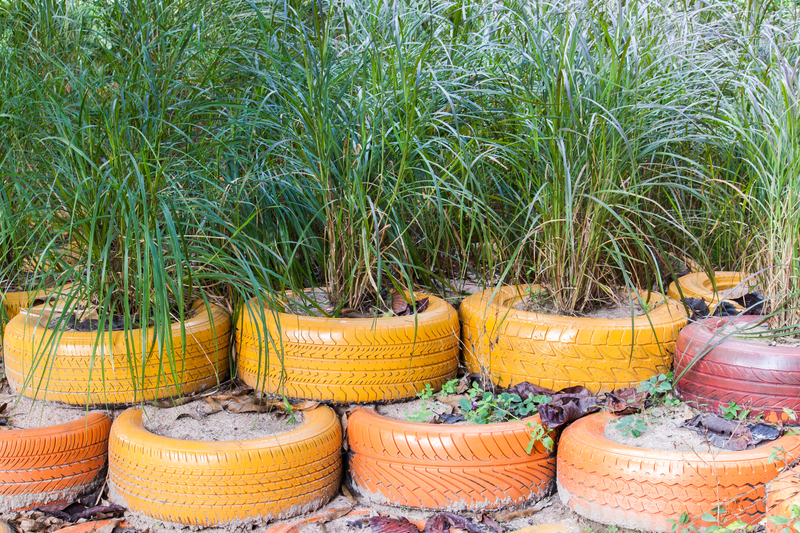As the global energy demand continues to rise, there is an increasing need to seek cleaner, more sustainable sources of energy. One promising area gaining traction is the concept of converting waste to renewable energy. This innovative approach not only addresses the critical issue of waste management but also helps in achieving energy sustainability. In this article, we explore various groundbreaking technologies and methodologies that are transforming waste into viable energy sources, and how these can shape a more sustainable future.
The Upsurge of Waste-to-Energy Technologies
In the modern world, waste is an unavoidable byproduct of daily life and industrial processes. Properly managing this waste is crucial to mitigating its environmental impact. Here's where waste-to-energy solutions come into play. These technologies have emerged as key components in sustainably addressing the growing waste problem while simultaneously contributing to the energy grid.
- Incineration: One of the oldest methods in waste-to-energy conversion, incineration involves the combustion of organic substances contained in waste materials to transform them into heat, which can further be used to generate electricity.
- Gasification: This process transforms organic materials into syngas through a reaction with limited oxygen under high temperatures. The resultant gas can be used as a fuel itself or to generate electricity.
- Pyrolysis: Unlike incineration, pyrolysis involves decomposing organic waste in the absence of oxygen. This primarily produces oil, gas, and solid residues which are useful as alternative energy resources.
- Anaerobic Digestion: Organic waste is broken down by bacteria in an oxygen-free environment. This process not only reduces waste but also produces biogas, a potent source of renewable energy.

The Environmental Impact of Waste Conversion
The environmental benefits of waste-to-energy (WtE) technologies are profound. By diverting waste away from landfills, these technologies effectively reduce harmful greenhouse gas emissions and mitigate the ecological footprint of waste disposal.
- Landfill Reduction: By converting waste into energy, the volume of waste directed to landfills is significantly reduced, preserving land resources and minimizing environmental contamination.
- Emission Control: Modern WtE facilities are equipped with advanced technology that adheres to strict legal limits, thereby minimizing emissions of pollutants such as nitrogen oxides and particulate matter.
- Resource Conservation: The conversion process recovers energy, and materials like metals can be extracted and recycled, conserving raw materials.
The Economic Advantages of Waste Conversion
Aside from environmental benefits, turning waste into energy produces several economic incentives that cater to diverse sectors, including industry, agriculture, and municipalities.
- Job Creation: The establishment of WtE plants boosts local economies by creating a range of jobs in manufacturing, operations, and maintenance.
- Energy Security: By providing a homegrown source of energy, countries can reduce their reliance on fossil fuel imports, enhancing energy security.
- Cost Savings: Cities save on disposal costs while simultaneously generating revenue through the supply of energy from municipal waste.
Innovative Waste-to-Energy Projects Worldwide
The drive to harness waste as a renewable energy source has led to a range of inspiring projects worldwide. These initiatives showcase how technological advancements are revolutionizing the concept of energy production from waste.
Copenhagen's Amager Bakke Facility
Copenhagen, a leading city in environmental sustainability, is home to the remarkable Amager Bakke waste-to-energy plant. This facility, also known as Copenhill, considers aesthetics and functionality by doubling as a recreational center complete with a ski slope. It processes waste into both electricity and district heating, catering to tens of thousands of households while reducing landfill dependency.
Singapore's Tuas Nexus
In Asia, Singapore's Tuas Nexus integrates solid waste management with new water generation technologies to establish ecosystem synergies. Lauded for its innovation, this facility merges water reclamation with waste management operations, achieving substantial energy self-sufficiency and solid waste reduction.

Future Perspectives for Waste Conversion Technologies
Waste-to-energy technologies continue to evolve, offering new possibilities and expansions for their applications. As more governments and organizations prioritize sustainability, research and development in this sector are fostering more innovative waste conversion methods.
Biotechnological Advances
The convergence of biology and technology, such as bioenergy with carbon capture and storage (BECCS), is paving the way for carbon-negative energy generation practices. By capturing carbon emissions during the bioenergy production phase, these technologies can potentially lower atmospheric CO2 levels, compounding environmental benefits.
Integration into the Circular Economy
As the transition to a circular economy gains momentum, waste-to-energy processes are expected to play a crucial role. They contribute by ensuring that waste not only ceases to be an environmental burden but transforms into a valuable resource, thereby closing the resource loop.
Smart Waste Management Systems
Technological infrastructure developments, such as sensor-enabled waste bins and AI-driven waste sorting, are making waste management more efficient. Enhanced sorting can improve the quality of input waste, thereby increasing the efficiency and output of WtE conversion technologies.
Conclusion
As the planet grapples with sustainable waste management and growing energy demands, converting waste into renewable energy has emerged as an indispensable solution. Through intelligent design and continued technological innovations, society can effectively minimize waste and create sustainable energy sources. These groundbreaking approaches offer a vista towards a future where waste is no longer a detriment but an opportunity for producing clean energy.
With global initiatives and projects pushing the frontier of waste-to-energy innovations, it is crucial to continue investing in research and development to uncover new potentials and efficiencies in transforming waste into valuable energy assets. The scope of these technologies in tackling environmental and energy challenges is immense, promising a greener and more sustainable future for generations to come.